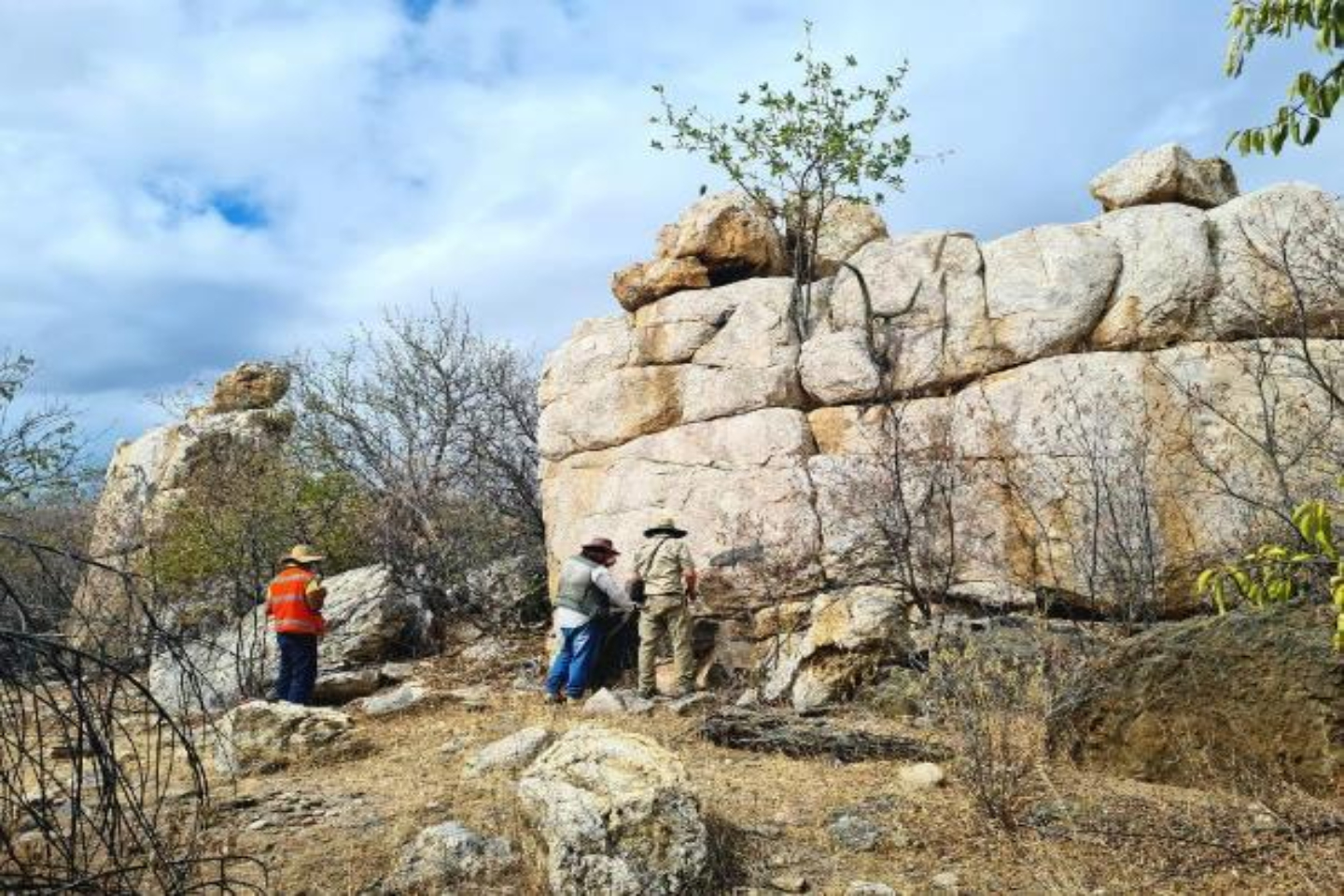Having recently pivoted into an emerging lithium hotspot in Brazil, Gold Mountain is promptly exploring its significant package of tenements as it eyes its first drilling program by the year’s end. The company’s exploration to date has identified 250 pegmatites, with multiple soil and rock-chip sample results pending. Gold Mountain is just starting its lithium climb.


Having recently pivoted into an emerging lithium hotspot in Brazil, Gold Mountain has promptly knuckled down to work on exploring its significant package of lithium tenements as it eyes its first drilling program by the year’s end.
The company signed a deal last month to pick up 75 per cent of nearly 4000 square kilometres of ground across 204 tenements and 12 project areas in north-east Brazil, a region that is rapidly attracting the world’s attention amid lithium’s rise to prominence.
While still widely underexplored, Brazil has quickly become a genuine player in the hard-rock lithium space and Gold Mountain’s extensive portfolio of tenements provides it with the chance for multiple shots on goal.
The company today provided a thorough update on its exploration activities across its portfolio of projects, with highlights including the identification of 250 pegmatites at its Logradouro tenements. Management says the pegmatites were formed in up to 16m of continuous outcrop, while several soil and rock-chip samples are yet to come back from the laboratory.
Additionally, management says its workforce has been significantly upgraded with experienced geologists and a field technician appointed, which should allow for the rapid appraisal of the company’s project areas and the development of drilling targets.
Upon announcing it was acquiring prime lithium real estate in Brazil last month, Gold Mountain’s share price leapt from 0.35 cents to as high 1.6c. Yet the junior – which is yet to start any drilling on its new landholdings – is still only capped at $25 million, leaving plenty of potential upside.
And when it comes to lithium exploration in Brazil, progress can come quickly and the rewards can be substantial.
Consider Gold Mountain’s neighbour, Latin Resources, whose market capitalisation has skyrocketed to almost $1 billion – a leap from $300 million just two months ago – after the company upgraded its mineral resource and identified a new lithium corridor. Similarly, Solis Minerals now has a $63 million market cap since its share price flew from 14 cents in May to as high as $1.34 last week after simply executing an option to acquire the Jaguar project in north-east Brazil and starting to drill.
Gold Mountain interprets its Salinas II and the Salinas South lithium projects to be adjacent to other major players, including Latin, and are within the proven “Lithium Valley” area that hosts Sigma Lithium’s flagship Grota do Cirilo mine, which was Brazil’s first producing lithium operation.
While still in the early stages of exploration, Gold Mountain hasn’t yet provided the high grades of samples to make the market really sit up and take notice. However, the company has only undertaken surface-level sampling to date.
By way of comparison, Latin’s high-grade results were all achieved from depth. Specifically, all of Latin’s recently upgraded 45-million-tonne resource lies at depth, below the base of complete oxidisation, while Gold Mountain has so far barely scraped the surface of its promising ground.
For that reason, management is now working to identify its most prospective targets ahead of drilling, which it is targeting to start by the end of the year.
Gold Mountain also this week revealed details relating to its Papua New Guinea (PNG) operations, where it says results from recent trenching and soil sampling at its Pully-Kandum target at Mt Wipi have been positive. It produced promising numbers from a large area at Pully-Kandum and confirmed mineral alteration styles typical of the top of a potentially shallow-depth copper porphyry system.
The company believes important mineral assemblages identified by trench and soil geochemistry enhance the potential for the discovery of a shallow copper deposit. That theory is based on anomalous copper geochemistry from trench sampling that supports previous high soil copper results, which extend across the Mt Wipi target, and enhanced pyrite mineralisation through an area of about 1sq km.
Gold Mountain has focussed the recent exploration on its Pully-Kandum prospect on extending four previous sampling trenches that reported the best intercepts, while also exposing additional favourable indicator mineralisation and hydrothermal alteration.
Copper results from the four best trenches average 0.227 per cent copper overall, with the top three highest individual intercepts within longer runs yielding values of 0.509 per cent in 2m, 0.497 per cent in 1m and 0.34 per cent in 6m of trenched distances, respectively. The best trench intercept runs include 32m at 0.182 per cent copper, including 16m at 0.239 per cent, 9m at 0.224 per cent, 7m at 0.329 per cent, 10m at 0.234 per cent and 17m at 0.201 per cent.
The company says the results allow for a better understanding of the Pully-Kandum prospect area in the region’s geological and structural context.
The prospect is part of the company’s Wabag project group of exploration licences, comprising highly-prospective exploration ground within the geological Papuan mobile belt that hosts at least nine major mineral deposits, including several world-class copper-gold plays.
The Wabag project lies at the north-western extremity of a well-mineralised 17km-long, north-west/south-east-trending structural corridor, broadly along strike from and about 50km south-west of Barrick Gold’s world-class Porgera joint venture and RTG Mining’s Mt Kare gold mines.
Is your ASX-listed company doing something interesting? Contact: matt.birney@businessnews.com.au












